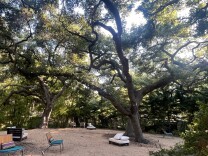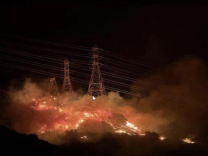
Next Up:
0:00
0:00
-
Listen Listen
Climate & Environment
The report concludes that the water supply was too slow, not too low, and even a functioning reservoir likely wouldn’t have stopped the Palisades Fire.
Sponsored message
More Stories
-
How do scientists monitor the populations of the threatened California red-legged frog? With careful listening and a little help from AI.
-
The new rules for Lake Elsinore and Canyon Lake upstream include stricter limits on common pollutants.
-
Most of the infected mosquitoes have been found around the San Fernando Valley so far.
-
The State Water Resources Control Board didn’t shy away from a controversial agreement in a new proposal, which qualifies as a major development in the long-running debate about delta water use.
-
Native plants, succulents and mulch are important considerations. But you can also improve fire resilience by following some guidelines about spacing and irrigation.
-
The Trump administration wants to reverse a 2009 EPA finding that greenhouse gases endanger people. The finding is the basis for much of the United States' climate change regulations.
-
Clouds and accompanying cool weather will be here for the next few days.
-
The details of the payouts are expected to be released later in the summer and come as the utility faces lawsuits over the possibility that its equipment sparked the fire.
-
It’s not just that it’s dark and people are asleep. Urban sprawl, confirmation bias and other factors can play a role.
-
Clouds and accompanying cool weather will be here for the next few days.
-
An expert explains what survivors of the Palisades and Eaton fires should consider before joining a fire-related lawsuit.
-
Visitors are welcome to catch the rare sight — and smell — in person for free. Or watch it bloom through the Huntington's livestream.
Philanthropic funds helped purchase a burned lot that used to have 14 rental units. Supporters hope the project can be a model for rebuilding equitably for renters.
Listen
0:42
Support your source for local news!
In case you missed it
-
911 recordings obtained by LAist shed light on why and how emergency planning continues to leave people with disabilities behind.
-
LAist investigates illicit dumping at three Antelope Valley sites.
-
An LAist investigation found toxic heavy metals in samples of fire retardant collected from the Palisades, Eaton and Franklin fires. Here's what that means.
More Stories
-
Embers, then radiant heat, then direct flames are responsible for most houses burning down in wildfires.
-
Here are some common mistakes or misconceptions you may run into.
-
Catastrophic wildfires are common in California, and mental health specialists have become a key part of local governments’ response to extreme weather events, which scientists say are becoming more intense and frequent due to climate change.
-
Los trabajadores domésticos -niñeras, jardineros, asistentes para personas mayores- son una parte enorme de la economía de la región.
-
With more wind on the way, ash cleanup likely won’t be a one-time thing.
-
Pro-Kremlin social media accounts and outlets have been spreading a baseless narrative that mansions belonging to Ukrainian officials burned down in Los Angeles.
-
Most residents of middle-class Altadena could get fire insurance, but that is likely to change as residents rebuild and face price hikes.
-
Air quality experts and advocates warn of the potential dangers of smoke, ash and soot.
-
Los Angeles has wildfire policies that are far tougher than many of those in Western states. The destruction from the recent fires shows there are still major gaps to address.Listen 3:31
-
Kate Dargan Marquis of the Moore Foundation discusses spurring research and development to keep up with the growing impact of wildfires.




































